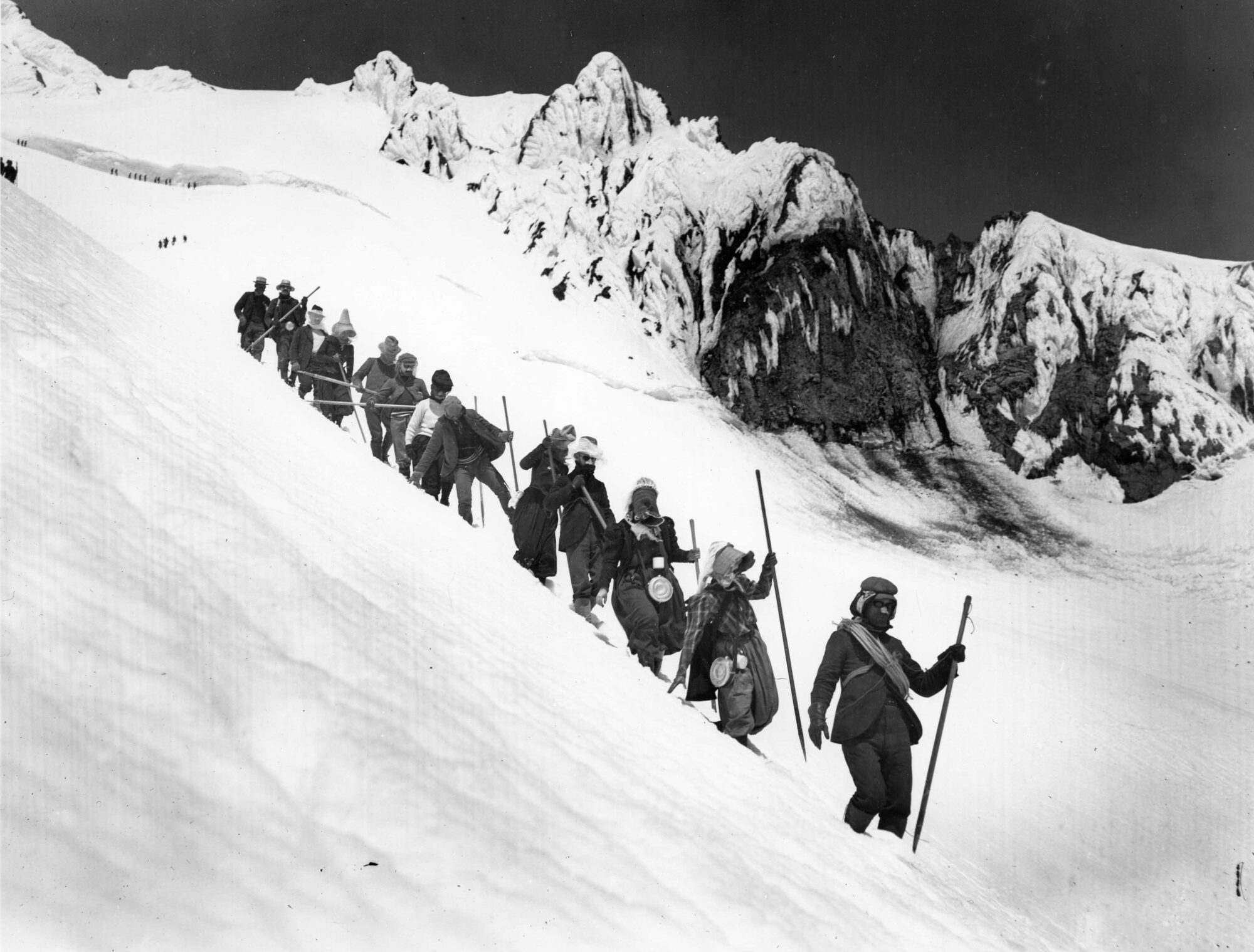
6/11 I took the trail about 6 am. It was pretty wet going, I got up to the upper lake (2m) here y saw quite a number of ducks but I left them alone, from there I expected to have quite a climb to the pass so I was very surprised when the trail came near the creek after having left it for a short distance, to find that the water flowed north instead of south, I was going down towards Buffalo creek all ready, there was quite a lot of snow in the timber but I soon got down to an open grassy park, and here I nearly stumbled on an elk but he was too far away by the time I got my camera in action, but there also was a big, fat porcupine and I believe I got his picture although I had to take it on the run. After going down a little more I crossed the creek and began climbing up on to a lot of open park on the hillside here I first saw 1 elk laying down some distance away the I had close view and a picture of 4 bulls y later on I saw several more [unintelligible] y got another picture of 4 cows, so I have seen 8 today. Well, after a while I had another snowy slope down to Buffalo Creek. The [unintelligible] told me last night

that I could not cross the Buffalo without swimming, but after I had decided on the best place I stripped off and waded across, walking a little downstream y using a stick to steady me the water was very cold so after rubbing my legs good I crossed back then got my outfit and crossed the third time. Then I eat lunch before I started out again. From here I expected to find another trail branching off to 2 Ocean Pass y if I didn’t find it I would first follow the creek down to where the Highway crosses. Well, I didn’t find the Trail ( I expect I should have gone upstream a ways instead) it was interesting country unspoiled by civilization y I saw elk … y than in some places the river runs through a narrow, rough gorge. The main trail crossed the [something] a couple times, but as it was to big to ford here safely I managed to get along on the N side by climbing around the cliffs a couple of times finally I cam out on high bench-land covered thickly with LP Pine. Here I lost the trail but followed elk trails for a while but where I saw the rive again I could hardly
figure out which direction it was flowing. but I decided it must be Soda Creek coming down to it and it joined the river in a very peculiar manner.

Well, after crossing the creek I found the trail so I thought I might as well camp especially as I got m pants wet in crossing. Well, it has been rather wet y hard going, but I have seen the Elk in their natural surroundings and native haunts y I have enjoyed it very much, I only wish I had found that trail today. I saw several grouses [unintelligible] y a number of new flowers as I have been walking along I have been comparing the country with Alaska it is very much the same thing at this time of the year. It is getting more pleasant weather for camping out. This morning at 4.30 it was warm enough so I could strip off and take a good rub down before dressing.

7 pm. Just now I heard some elk bugle y I can see 5 across the river with 2 calves. There also is a couple grouse drumming nearby. Jeh, I hate to go back to the highway.”
























Thanks so much for fixing the link! It works, now! – leora